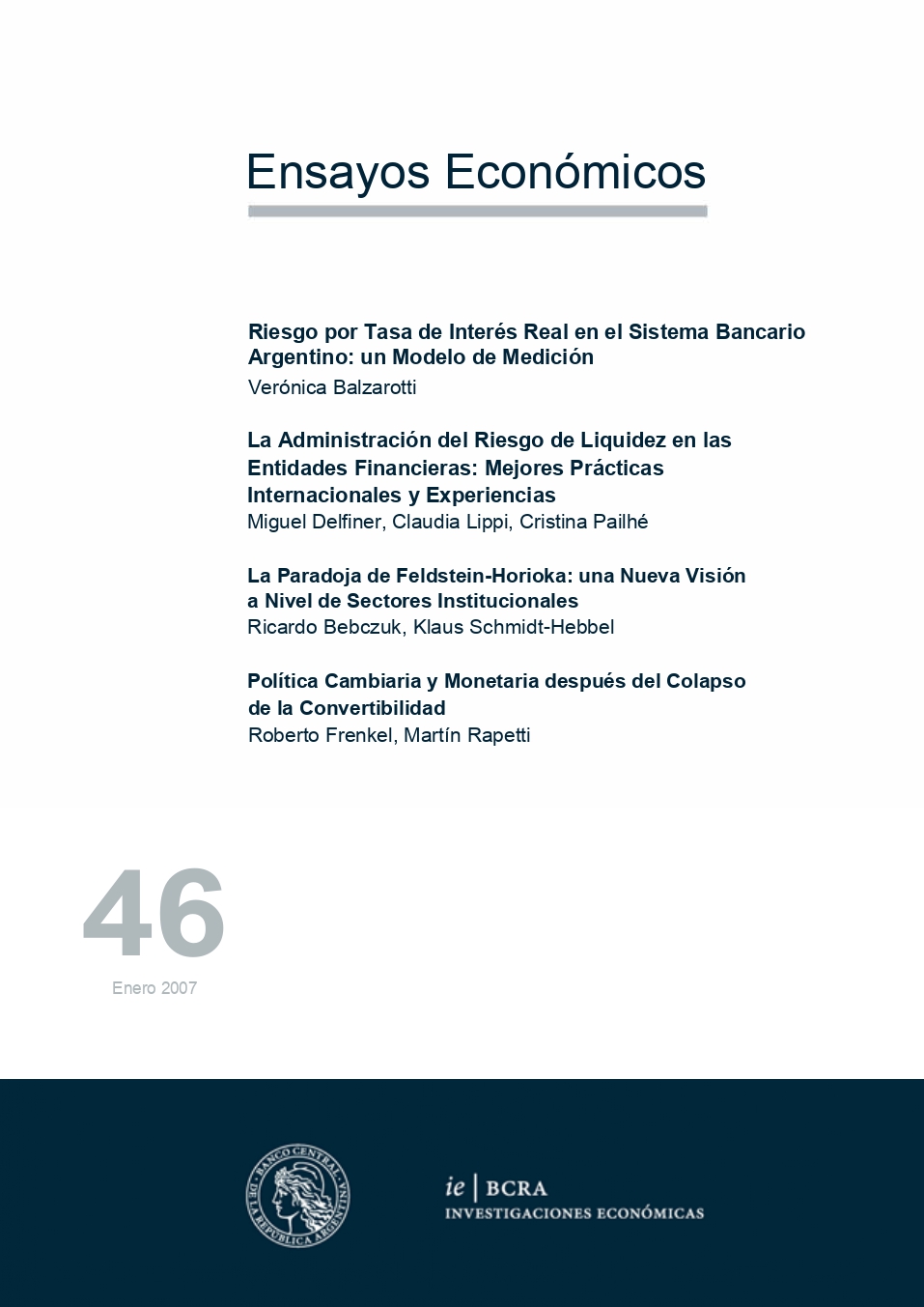Real interest rate risk in the Argentine banking system: A measurement model
Keywords:
Banks, Financial System, Real Interest Rate Risk, Value At Risk (VaR)Abstract
The exposure of the Argentine banking system to variations in the real interest rate is significant and discourages long-term credit. Quantifying this risk would help manage it and could encourage new lending, but it is not easy, especially in emerging markets. A Value at Risk (VaR) measurement approach is proposed using Monte Carlo simulation. Time series behavior models (autoregressive with mean reversion and jumps) are estimated for the rate of bank deposits and for inflation, seeking that they imply a manageable degree of difficulty for the local analyst. The results show that a bank that is funded with short-term deposits would face greater risk for adjustable assets than for nominal assets (which is why it would apply a higher premium for that risk, according to a risk-adjusted return on capital approach - RAROC). This can be linked to the discussion of the “paradox” of the scarce use of indexing. The magnitude of the risk and the fact that banks have the same mismatch sign does not help the development of derivative contracts. The results may also indicate distortions introduced by the regulation of minimum capital and accounting valuation. A generalization of the methodology could be explored within the framework of Pillar 2 of Basel II.
JEL classification: C22 ; E37 ; E47 ; G12 ; G21 ; G28 ; G32




